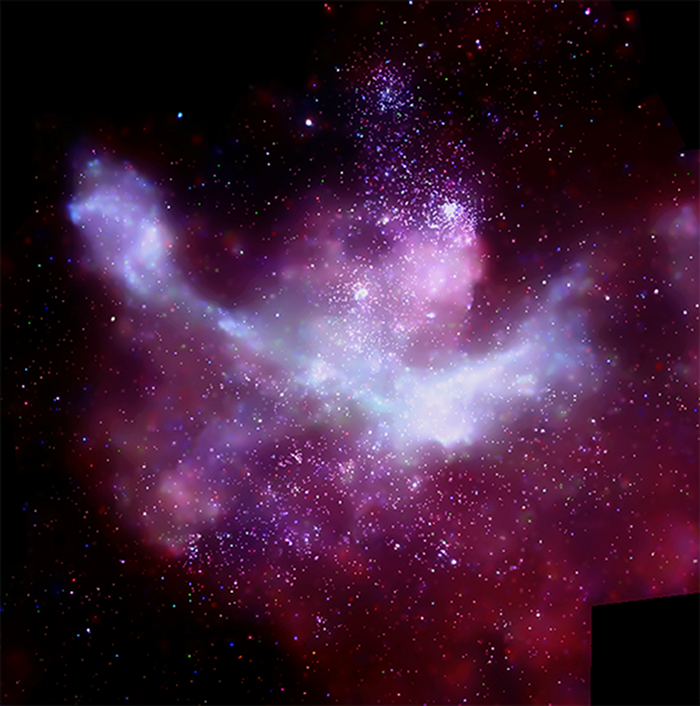
 Credit: NASA/CXC/PSU/L.Townsley et al.
Credit: NASA/CXC/PSU/L.Townsley et al.
Feedback
Stars are born in dense galactic clouds. It's a complex process, since new stars strongly interact with their birth clouds. These birthsites are heated by young massive stars, while strong winds from these same stars blow large bubbles, evacuating some regions of the natal cloud while compressing other regions. Finally, some of the most massive stars will end their lives as supernovae, even as the lower mass stellar population is still being born. So star formation is violent, and highly interactive. The Carina Nebula, a relatively nearby star-forming cloud, provides us with our best ringside seat to watch this process unfold. The image above is a new mosaic of the Carina Nebula in X-rays, taken by the Chandra X-ray Observatory. The Chandra map reveals the tell-tale high energy activity produced by the strong winds of some young stars and magnetic activity in others. Suffusing the entire nebula is a glowing cloud of million degree gas of uncertain origin, partly produced by stellar wind collisions, but perhaps indicative of a past supernova explosion or two. At the center of the image is the mysterious star Eta Carinae, itself ready to pop off in the near future.
Published: May 30, 2011
<
HEA Dictionary ● Archive
● Search HEAPOW
● Other Languages
● HEAPOW on Facebook
● Download all Images
● Education ● HEAD
>

Each week the HEASARC
brings you new, exciting and beautiful images from X-ray and Gamma ray
astronomy. Check back each week and be sure to check out the HEAPOW archive!
Page Author: Dr. Michael F. Corcoran
Last modified Monday, 26-Feb-2024 17:44:39 EST


